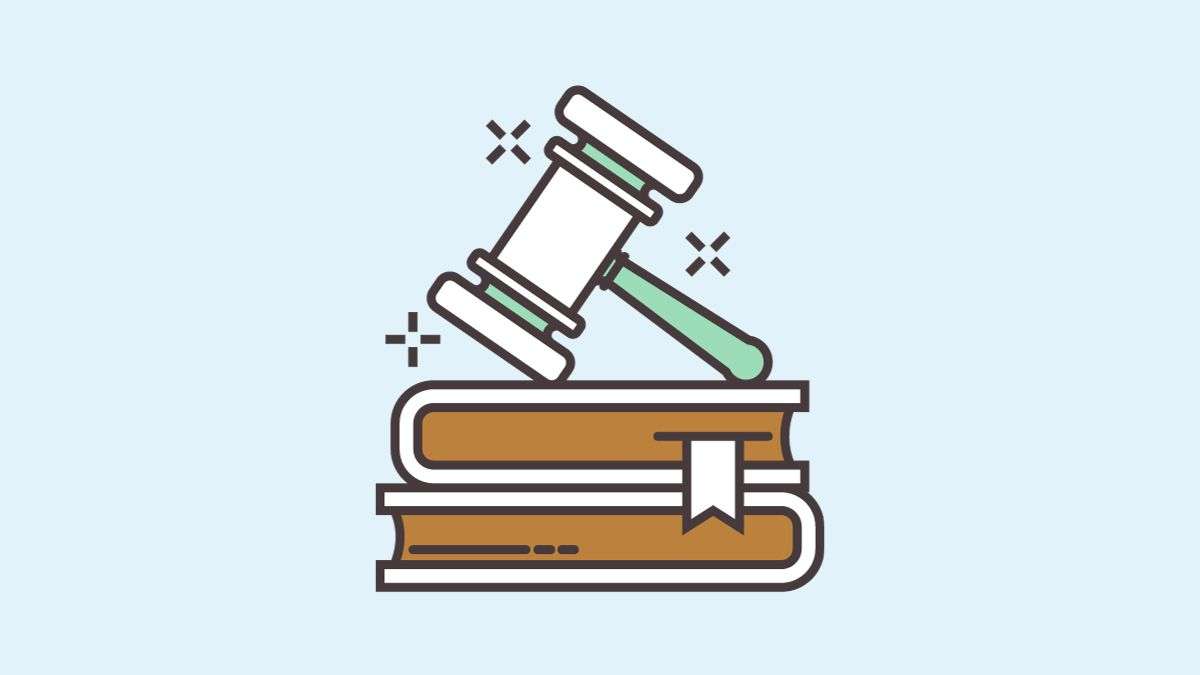Table of Contents
- Introduction
- Early History of Copyright
- The Birth of Modern Copyright Law
- Copyright in the Digital Age
- Navigating Copyright in the 21st Century
- Conclusion
Introduction
The article delves into the history of copyright. Copyright is a legal concept that grants creators of original works exclusive rights to determine how their works are used, distributed, and reproduced. At its core, copyright aims to balance the interests of creators to benefit from their works with the interests of the public to access knowledge and culture.
Copyright protects “original works of authorship,” such as books, music, paintings, photographs, films, and software. By granting creators exclusive rights for a limited time, copyright incentivizes people to create and share creative works with the public.
These exclusive rights allow creators to benefit financially from their works, enabling them to make a living through their creativity. Copyright also recognizes the personal connection creators often have to their works as meaningful expressions of their vision and ideas.
The origins of copyright can be traced back hundreds of years. Early privileges and protections granted to publishers and printers during the Renaissance laid the foundations for modern copyright law.
The first modern copyright law, Britain’s Statute of Anne of 1710, established some fundamental copyright principles still relevant today: granting creators exclusive rights to print and reprint their works for a set period. The Statute of Anne influenced copyright laws across Europe and the American colonies.
Understanding the History of Copyright in the Digital Age
In today’s digital age, copyright faces new opportunities and challenges. Digital technologies allow creative works to be perfectly reproduced, remixed and spread globally at little cost. This raises issues around enforcing copyright, licensing, and fair use.
Understanding the rationale behind copyright and its historical development can guide how to balance the rights of creators with appropriate access to knowledge and culture in light of new technologies.
As copyright continues to evolve in the digital age, appreciating its origins and intent will ensure it still serves its purpose – providing incentives for creativity while promoting the spread of ideas.
Early History of Copyright
The early history of copyright can be traced back to ancient civilizations like Greece and Rome. In ancient Greece, authors and playwrights sought to protect their works by placing curses on unauthorized copies. For example, a common inscription on Greek plays stated, “May the violator of this title endure the wrath of Dionysus.” This shows an early attempt to assert ownership over creative works.
In ancient Rome, some forms of early copyright emerged in the privileges and licenses granted to authors by wealthy patrons. For example, the Roman poet Martial secured a license from Emperor Domitian, giving him exclusive rights to publish his works. However, such protection depended on the whims of rulers rather than being an established legal right.
Impact of the Printing Press
The invention of the movable type printing press in the 15th century led to a surge in the copying and distribution of books. This made the concept of copyright more crucial. In response, many European governments granted printing monopolies and privileges to publishers to incentivize printing while combating piracy.
For instance, in England, the Crown granted exclusive printing rights for specific works through royal charters in the 16th and 17th centuries. The Stationers’ Company also emerged as an association of printers and booksellers that regulated the book trade. Members agreed not to print books that other members had already claimed.
While focused on publishers rather than authors, these early measures laid the foundation for modern copyright law by establishing the concept of ownership over copies of creative works.
The Birth of Modern Copyright Law
The emergence of statutory copyright law can be traced back to the Renaissance and Enlightenment periods in Europe. As literacy rates rose and the printing press enabled wider dissemination of knowledge, there was a growing recognition of an author or creator’s right to control the reproduction of their works. Key philosophical concepts, such as John Locke’s labor theory of property, also laid the ideological groundwork for copyright law.
In England, the Statute of Anne passed in 1710 marked a pivotal moment as the first statutory copyright legislation in the world. Before this, printing privileges and licenses granted by the monarchy constituted a primitive and limited form of copyright. The Statute of Anne established crucial copyright principles by recognizing an author’s right to control reproduction for a limited term of 14 years (renewable once).
Over the next few centuries, copyright law continued to evolve through a series of significant milestones:
- The Berne Convention of 1886 created baseline international standards for copyright and mutual recognition between member countries.
- The 1909 Copyright Act in the US expanded protections to additional types of works beyond books.
- The World Intellectual Property Organization (WIPO) Copyright Treaty in 1996 helped adapt copyright for the digital age.
While differing in specifics, these efforts shared the goal of balancing protections for creators with public access to knowledge and culture. Understanding this historical context helps inform debates around copyright’s role in today’s internet era.
Copyright in the Digital Age
The digital age has brought challenges and opportunities for copyright enforcement, altering the history of copyright in the process. On one hand, the Internet and digital technologies have enabled easier sharing, copying, and distributing of copyrighted content. This has led to widespread digital piracy and copyright infringement issues that content creators and owners face today.
For instance, peer-to-peer file-sharing networks in the early 2000s allowed users to freely share music, movies, books, and other media. Sites like Napster and Limewire became immensely popular as they enabled access to copyrighted content without paying. However, this also led to major losses for industries reliant on copyrights. The music industry alone is estimated to have lost over $12.5 billion in revenue from piracy from 1999-2008.
Rise of Digital Piracy
Digital piracy continues to be an ongoing issue as users turn to illegal streaming sites, torrent platforms, and cyberlockers to access copyrighted content. The anonymity afforded by the internet has made tracking infringers more difficult. According to piracy tracking firm MUSO, global piracy traffic remains high, with over 300 billion visits to piracy sites estimated in 2022 alone.
Copyright Protection Efforts
In response, major efforts have focused on copyright protection in the digital sphere. These include:
- The implementation of the WIPO Copyright Treaty (1996) and WIPO Performances and Phonograms Treaty (1996) set global standards for copyright protection.
- The passing of the Digital Millennium Copyright Act (DMCA) began in the US in 1998 to address copyright issues online.
- Use of Digital Rights Management (DRM) tools by content platforms to control access and copying of digital content.
- Streaming platforms offer affordable access to copyrighted content to combat piracy.
While piracy remains an ongoing concern, expanding legal online content platforms indicates progress towards better copyright protection in the internet era. However, the continuous evolution of technologies, regulations, and consumer behaviors will impact how copyright is handled globally in the digital future.
Looking Ahead
Emerging technologies are expected to continue influencing copyright issues. For instance, artificial intelligence-generated content and virtual reality environments pose new questions about copyright ownership and protection. Social media and Internet of Things connected devices also introduce concerns about rights to user-created content and data ownership.
Copyright law and enforcement strategies must evolve to keep pace with technological shifts. More international cooperation and updated national policies focused on digital content protection will be key in the coming years.
Navigating Copyright in the 21st Century
Copyright law in the 21st century faces many contemporary issues and debates as technology rapidly evolves. One major area of contention is the scope of fair use, which allows limited use of copyrighted material without permission under certain conditions.
As more content gets created and shared online, questions arise about what constitutes fair use on social media platforms, memes, remixes, and more. There are also ongoing discussions around expanding the public domain, the body of creative works freely available for public use. While some argue for stronger public domain protections to promote access, others warn this could undermine copyright incentives.
Social Media and Fair Use
Social media has introduced new complexities around copyright and fair use. The prevalence of memes, remixes, and other user-generated content containing copyrighted images, videos, or songs raises difficult questions. Platforms like Facebook and YouTube rely extensively on algorithms to detect infringement. However, these algorithms often fail to account for fair use, prompting calls for reform. Clear legal guidelines are needed on what types of social media reuse should qualify as fair use.
Streaming and Licensing
The rise of entertainment streaming has also intersected with copyright law in new ways. Platforms like Netflix, Hulu, and Spotify rely on licensing agreements to share copyrighted films, shows, and music. However, licensing restrictions can frustrate consumers when titles unexpectedly disappear from catalogs.
Streaming also sparks debates around copyright terms, as studios and labels push for longer exclusive rights while consumers demand more public domain access. Ongoing legal battles shape how streaming platforms license content.
The Future of Copyright
The history of copyright will affect its future. In the coming years, copyright will likely evolve in response to technological advances. Artificial intelligence, virtual reality, and blockchain issues could introduce new questions. However, the underlying goal of copyright to spur creative innovation by balancing public access and creator incentives will remain relevant.

To develop adaptable, forward-thinking policies, constructive discussions, and reasonable compromises among stakeholders will be needed. Overall, navigating copyright in the digital age requires an openness to revisiting assumptions while still valuing the rights of creators.
Conclusion
In conclusion, the history of copyright is a rich tapestry that reflects the evolving relationship between creators and society. From ancient civilizations to the digital age, the journey of copyright has been marked by efforts to balance the rights of creators with the public’s access to knowledge and culture. As we look forward, it is clear that this balance will continue to be tested by new technologies and changing consumer behaviors.
The digital era presents both challenges and opportunities for copyright law. While the rise of the internet and digital technologies has facilitated unprecedented access to creative works, it has also exacerbated piracy issues and complicated enforcing copyright protections. Yet, the same technologies offer potential solutions through innovative content sharing and rights management approaches.
As we navigate the 21st century, the principles that have guided copyright since its inception remain vital. The goal to incentivize creativity while ensuring the spread of ideas requires a dynamic legal framework that can adapt to technological advancements without stifling innovation or access.
Stakeholders across the spectrum—creators to consumers, policymakers to technologists—must engage in ongoing dialogue to shape a copyright system that respects the rights of creators while embracing the possibilities of the future. Only through collaboration and compromise can we hope to forge a path that honors the past while looking squarely at the horizon of an ever-changing digital landscape.
The history of copyright reminds us that at the heart of these discussions is the fundamental human impulse to create and share stories, music, art, and knowledge. Ensuring that this impulse continues to thrive in a digital world will be the ultimate test of our collective commitment to balancing the scales of copyright law.

